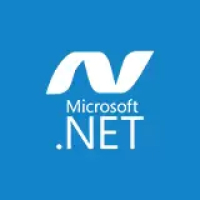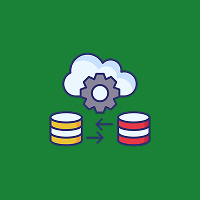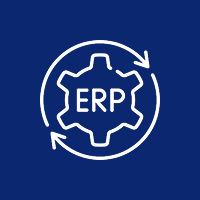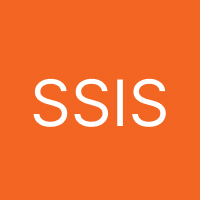With today’s interconnected digital world, more than just an amazing content and design are needed to reach more people—it takes accessibility in multiple languages. If your website caters to global users, incorporating multilingual functionality in WordPress is the key to enhancing user experience, broadening your audience, and increasing engagement.
Luckily, WordPress has great plugins such as WPML, Polylang, and Weglot that can make it a breeze to build a multilingual website without requiring complicated coding. This tutorial delves into the advantages of multilingual support, the most suitable tools to utilize it, and how to effectively optimize your WordPress site for many languages.
Why Add Multilingual Support to WordPress?
A multilingual-supported website can greatly drive traffic, enhance conversions, and have a robust presence in the international market. The following are the major reasons why incorporating multilingual support is important for WordPress sites:
1. Increase Global Reach
Having a multilingual website allows companies to reach out to global customers, creating new markets. It is more likely that visitors will be interested in native language content, so translation becomes a critical step to expanding your audience.
2. Enhance SEO & Visibility
Multilingual sites score better in location-specific search results. Search engines like Google give top priority to localized content, allowing sites to score better rankings when users search on their desired language.
- Main SEO benefits of multilingual WordPress websites are:
- Hreflang Tags: Enable search engines to present the correct language version to users.
- Localized URLs: Boost geographic search rankings (e.g., example.com/fr/ for French-speaking users).
- Multilingual Sitemaps: Support search engines in indexing pages via languages.
3. Improve User Experience & Engagement
A good user experience is essential for conversions. People who are able to navigate your site in their own language will be more likely to linger longer, navigate more easily, and take actions like signing up or buying.
4. Get Competitive Edge
Having a multilingual site gives your company an edge over competitors that provide content in a single language. It indicates a dedication to serving a multilingual audience, establishing brand trust and credibility.
Best WordPress Plugins for Multilingual Support
It is easy to add multilingual support to WordPress with the proper tools. Below are the best plugins to translate and manage a multilingual WordPress website:
1. WPML (WordPress Multilingual Plugin)
WPML is one of the most feature-rich multilingual plugins on the market, providing complete translation support for posts, pages, custom post types, and themes.
Key Features:
- Supports manual translation for absolute accuracy.
- Works perfectly with WooCommerce for multilingual eCommerce websites.
- SEO-optimized with hreflang tags and multilingual sitemaps.
- Supports all WordPress themes and plugins.
2. Polylang
Polylang is a free, lightweight plugin enabling WordPress users to develop a multilingual site easily.
Key Features:
- Supports manual translations.
- Smooth integration with SEO plugins such as Yoast SEO.
- Empowers users to set different languages for posts, pages, categories, and tags.
3. Weglot
Weglot offers an AI-driven translation option with high precision and ease.
Key Features:
- Supports more than 100 languages.
- Offers an intuitive dashboard to handle translations.
- Is compatible with SEO tools, such as Google Search Console.
- Provides automatic content detection for real-time translations.
4. TranslatePress
TranslatePress provides a special on-page visual translation editor, which allows for easy translation of content directly from the frontend.
Key Features:
- Supports manual and automatic translations.
- Integrates with WooCommerce for multilingual e-commerce stores.
- Offers translation options for images and dynamic content.
How to Implement Multilingual Support in WordPress
Install of a multilingual website in WordPress is an easy process. Keep following these instructions to have a smooth multilingual installation:
1. Selecting the Right Multilingual Plugin
Select a plugin that suits your business requirements, budget, and preferred translation model (manual vs. automatic).
2. Configuring Language Settings
- Install and activate the chosen plugin.
- Establish default and supporting languages.
- Setup language switcher options for the users.
3. Translating Content & Media
Make sure that everything, including all pages, posts, menus, widgets, and images, is translated. If automatic translation tools are used, go through and edit the translations to ensure accuracy.
4. Optimize for SEO
- Use hreflang tags to assist search engines in delivering the correct language version.
- Develop localized URLs for improved indexing.
- Translate metadata, alt text, and structured data for full SEO coverage.
5. Test & Launch
Before making your multilingual site live, test translations across different devices and browsers to ensure consistency. Check for formatting issues, broken links, and readability.
Additional Tips for a Successful Multilingual WordPress Site
- Use Professional Translators: If targeting high-value markets, consider hiring native translators for improved accuracy.
- Ensure Multilingual Customer Support: Providing support in different languages enhances trust and customer satisfaction.
- Track Performance Metrics: Leverage analytics software to monitor how the various language versions of your content are performing with regard to traffic, conversions, and engagement.
- Keep Translations Current: As you create new content, ensure that translations are kept current to avoid inconsistencies.
Incorporating multilingual capabilities to your WordPress website is a business game-changer for companies who seek to reach new global prospects. With the help of robust plugins such as WPML, Polylang, Weglot, and TranslatePress, you can provide a smooth user experience across languages and enhance SEO and engagement.
Begin optimizing your site today and discover new opportunities for growth in global markets by providing your WordPress website with greater accessibility to more people.













 Database Development
Database Development












































